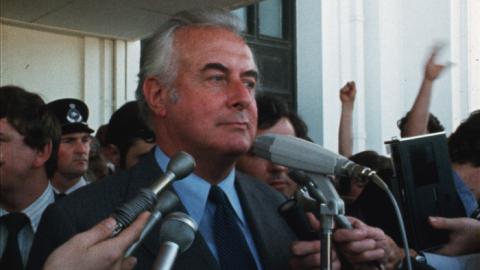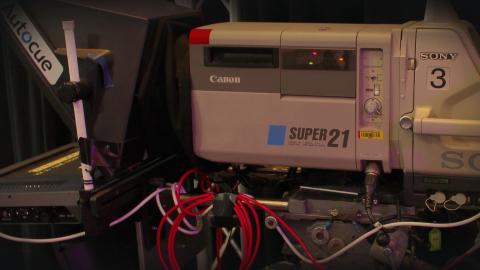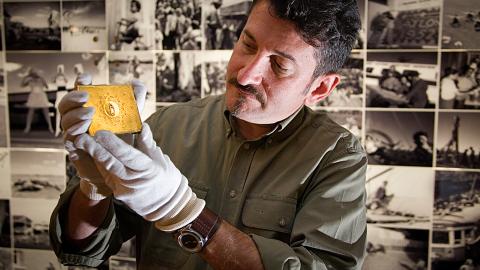
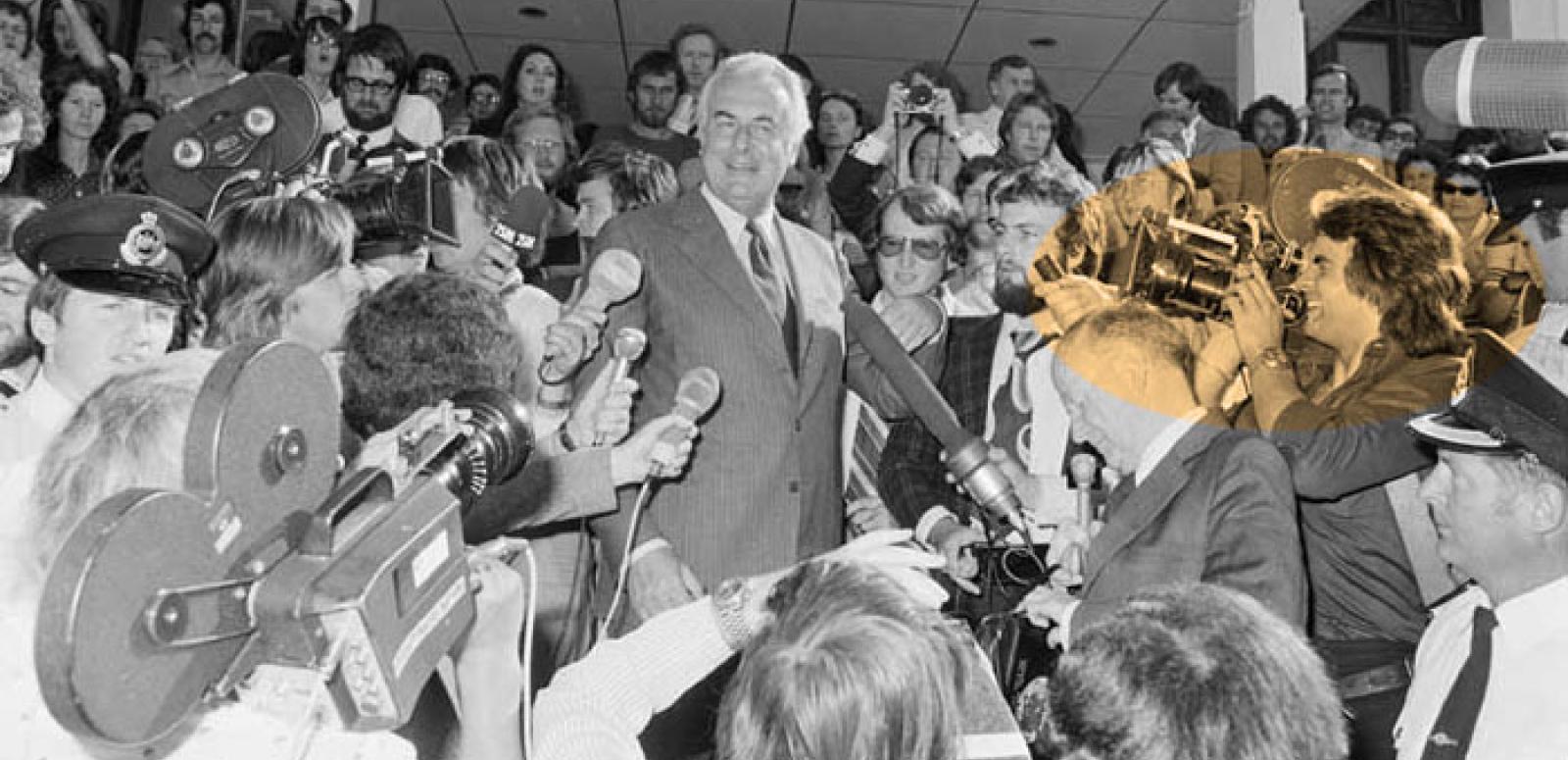
'The Dismissal' footage
Preserving 'The Dismissal' footage
Forty years after the Governor-General dismissed the Whitlam Government, we look at the NFSA’s digital preservation work on the surviving original news film shot on the day by Channel 7 camera operator Bob Wilesmith. See also Part One: The Dismissal through the news camera lens.
Mystery of the missing films
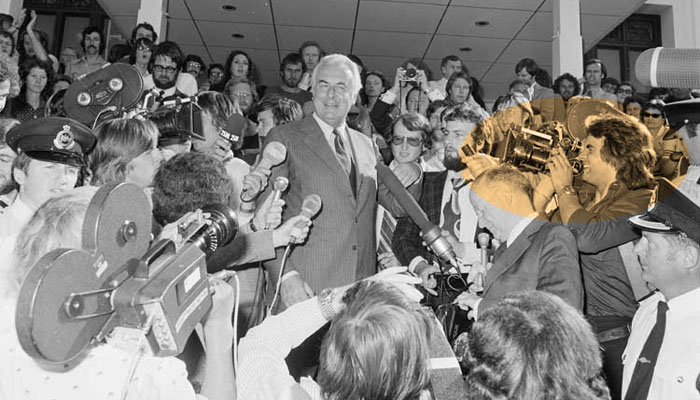
Bob Wilesmith’s footage is significant because, as far as we are aware, it is the only original film of this historical event that still exists. The Channel 7 news bulletin in which it featured is sadly no longer in existence. And mystery surrounds the fate of both the film shot by Ron Ashmore for Channel 9 and the ABC’s footage.
Former ABC archivist Wendy Borchers relates in Aunty’s Jubilee: Celebrating 50 Years of ABC Television (by Tim Bowden with Wendy Borchers):
Next morning, as soon as I came in to work, I put in a telephone call to Frank Reid, the Film editor at the ABC’s Canberra studios. I asked him to please package up all original reversal film of coverage of the momentous events of 11 November 1975, especially at Parliament House, by camera crews attached to News and This Day Tonight, and dispatch the lot to the Sydney library so arrangements could be made to have prints struck and the original film preserved and archived as a matter of urgency.
Ten minutes later, Frank called back. ‘You’re not going to believe this’, he said, ‘but my cutting room has been cleared out. Nothing remains. Not even the off-cuts!’.
As the reality of the historical significance of the film they had shot dawned, Ron Ashmore (pictured above) and his assistant John Bowring decided they should retain the film they had given to the Channel 9 bureau to feed to the Network:
After his footage aired on Channel 7, Bob Wilesmith packed up the film and sent it to ATN 7 in Sydney. Recognising its significance to the nation, the Seven Network has donated this film to the NFSA where it is now digitally preserved.
While there is other footage of the events of this day in existence, it appears to only survive on videotape; the original film elements are either missing or have long since been destroyed. The NFSA holds a copy of an excerpt of the Eyewitness News special produced by Network Ten and presented by Bruce Mansfield with political reporter Laurie Power. Shot by Channel Ten Parliament House bureau cameraman Phil Lorant, it includes rare shots of Gough Whitlam addressing the crowd with a megaphone:
Excerpt from The Australian Experiment: Labor 72-75. Courtesy of Network 10
Under the magnifying glass
Click on the gallery below for a behind-the-scenes look at the NFSA’s digital preservation of the original 16mm colour film:
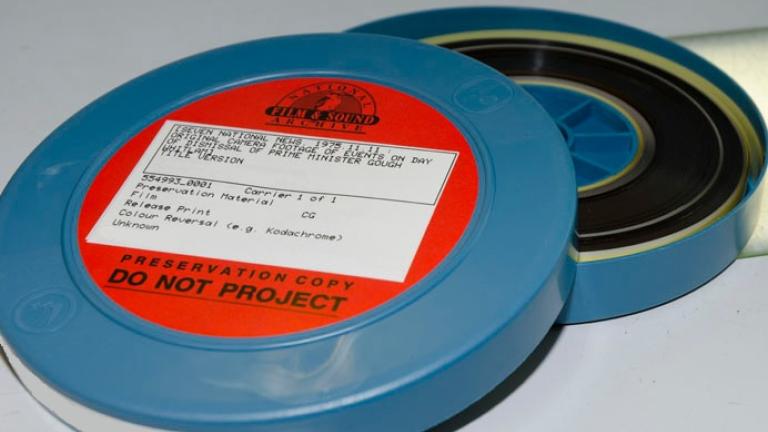
Digitally preserving the original 16mm colour reversal film begins with examining and cleaning the film before running it through the digital scanner.
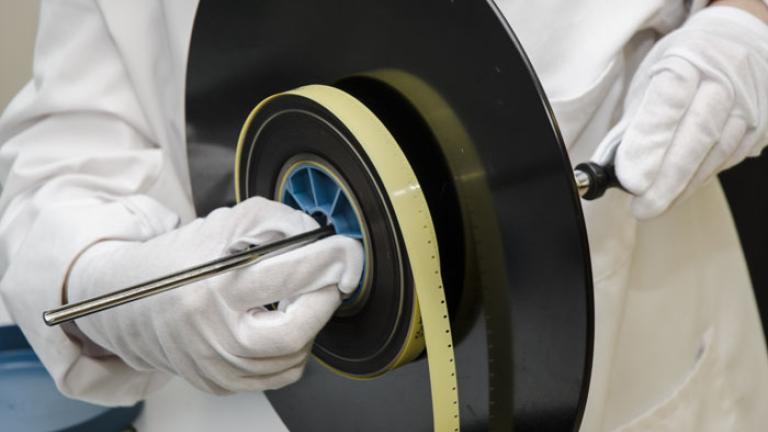
The film is placed on a hand winder in readiness for manual inspection.
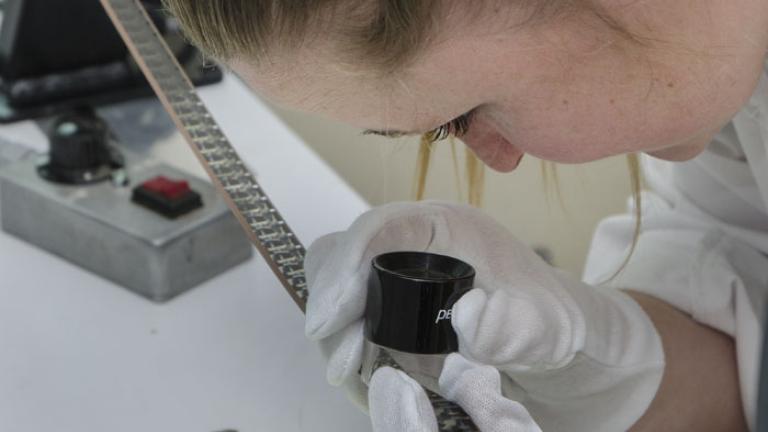
Audiovisual technician Bethanie Jacobsen examines a frame of the film through a hand-held magnifier.
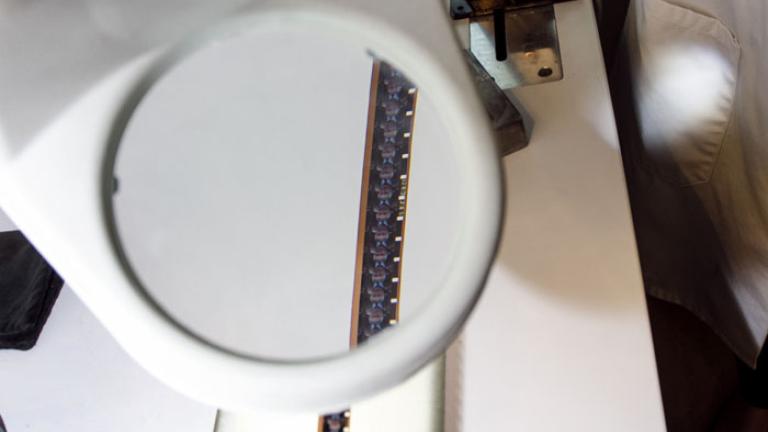
Using a more powerful magnifier to check for damage such as scratches and to ensure the splices are in good condition so that they will not come undone during scanning.
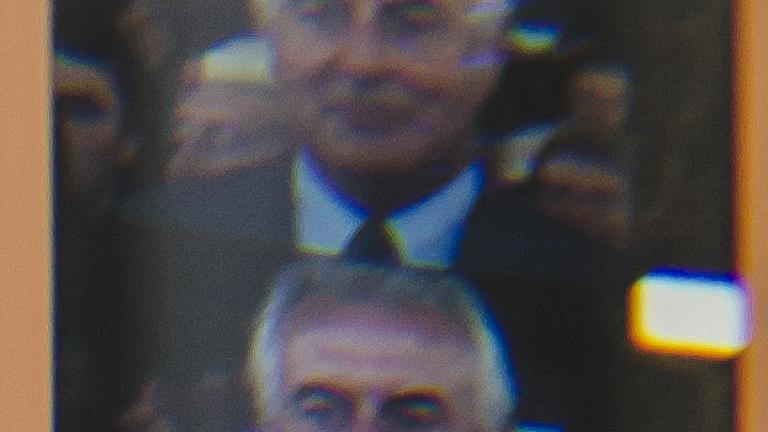
A close-up of frames from the original film. The orange stripe is the magnetic stripe soundtrack which contains the audio.
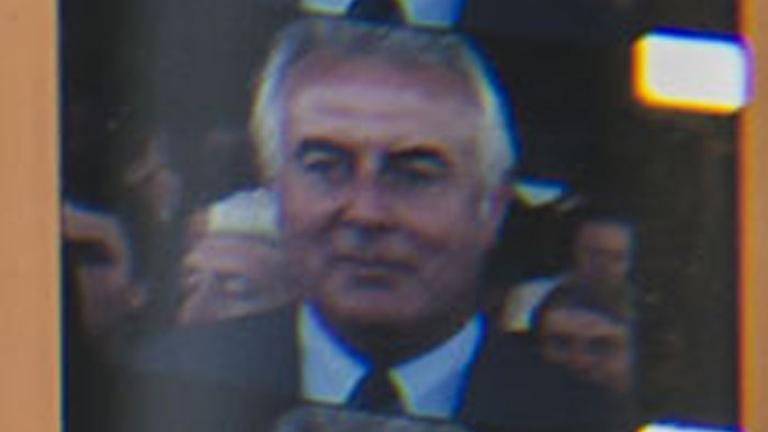
The final step in the process is to hand-clean the film using a velvet cloth to remove any dust or dirt.
A sound improvement
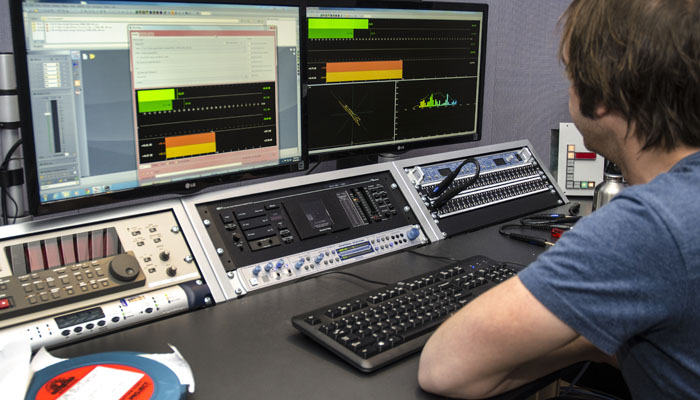
When Gough Whitlam utters ‘Well may we say “God save the Queen”’ in Bob Wilesmith’s footage, notice that there is a fluttering to the audio.
As Bob explains:
My footage I know because I had the CP-16 film camera, and it had what we call a ‘wow’ sound head. And it was worn and the voice is a little bit raspy. I wince every time I hear it.
This flutter is a variation in pitch caused by rapid fluctuations in speed. While the condition of the mag stripe soundtrack itself was good, it had scratches and distortions common to film audio of this vintage:
Without performing a full restoration, NFSA Audio Services have cleaned up clicks, thumps, noise and distortion on the audio. To the untrained ear there is little noticeable difference in sound quality, but the amount of flutter has been minimised:
NFSA Audio Services is continuing to investigate new tools and methods to assist in the painstaking work of manipulating the sound in order to reduce the effect of the flutter.
Preserving our Scanity
In copying images from film to videotape, the film’s rich colour, contrast and texture were reduced (below).
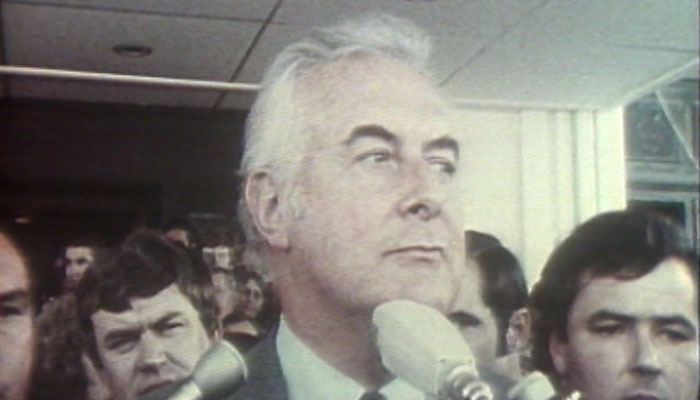
Whitlam frame grab from video
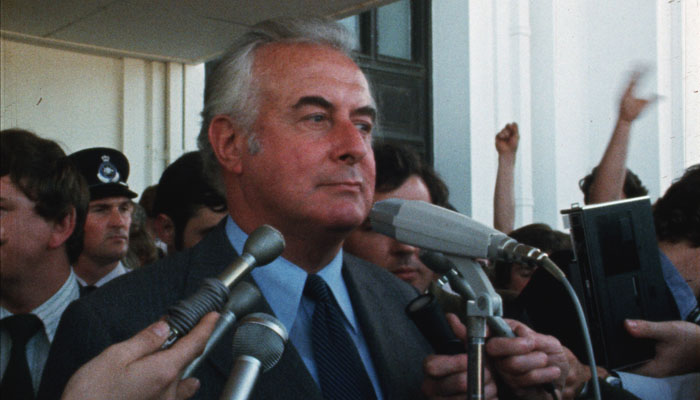
Whitlam frame grab scanned
Technology has advanced significantly in the 40 years since this film was shot and digital scanning now allows the NFSA to capture and present the original quality of this film recording.
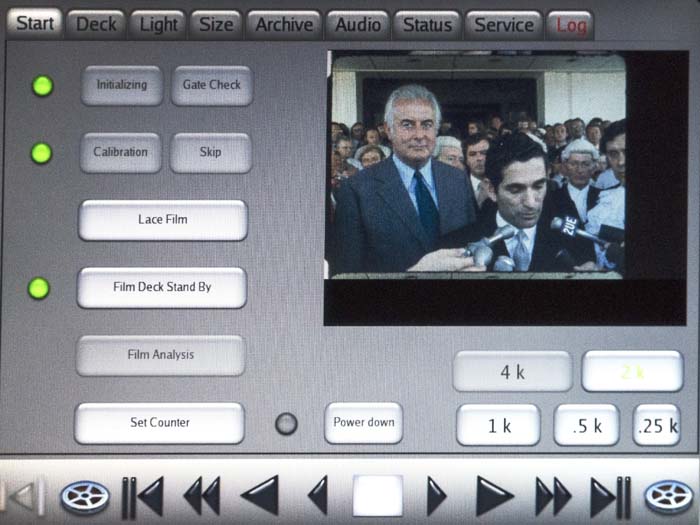
The scan is done at 2K resolution
To ensure that the maximum amount of image detail is captured the film is over-scanned. The two white areas at top and bottom left are the film’s sprocket holes.
Other work completed during this process includes basic dust removal, gamma correction and a primary grade to the image. The preservation files from the scanner are then converted and combined with the audio file to create a viewable file. The overscanned image can then be cropped so that it better reflects how the film was originally viewed.
Preservation for the nation
The excerpts of the original Channel 7 footage in The Dismissal: through the news camera lens are from these scanned digital files. The original film, shot by Bob Wilesmith for Channel 7, is stored in the NFSA’s humidity and temperature-controlled vaults. The NFSA is carefully selecting significant films, such as this reel, for digital preservation to ensure their safety for viewing by future generations. The ‘digital natives’ of tomorrow will still be able to see for themselves what happened on the eleventh of the eleventh 1975, the day that brought down a government and caused a constitutional crisis.
The National Film and Sound Archive of Australia acknowledges Australia’s Aboriginal and Torres Strait Islander peoples as the Traditional Custodians of the land on which we work and live and gives respect to their Elders both past and present.
